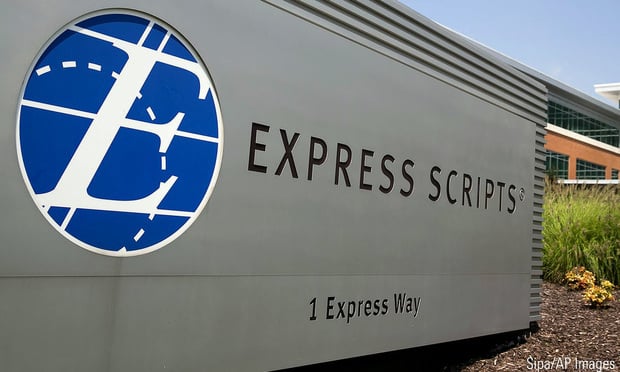 Binder with the word Claims on the spine.
Binder with the word Claims on the spine.
Just about 8 in 10 employers view catastrophic health care claims—those exceeding $500,000 in a plan year—as a significant threat to their health care plans. An increasing number of participants in a recent National Alliance survey said they are facing claims as high as $4 million.
The increasing prevalence of cancer, heart disease and diabetes—combined with the growing trend of working later in life—are key drivers of the surge in high-cost claims.
Recommended For You
These claims not only jeopardize an employer's financial stability; they also underscore the need to maintain a benefits strategy that reflects genuine care and empathy for employees during their most vulnerable moments. Ensuring employees feel adequately supported isn’t just an ethical responsibility—it’s a practical one, as it helps foster loyalty, morale and trust in the organization.
Catastrophic claims pose significant challenges to maintaining an effective employee benefits strategy. A weak benefits program can lead to its own set of consequences, such as poor workforce morale, difficulty acquiring new talent and complications in retaining top performers.
Brokers with clients facing such challenges may find their relationships at risk, as employers could attribute the problem to inadequate plan design.
Conversely, catastrophic claim management is an opportunity for brokers to collaborate with their clients on future-proofing their benefit programs. Aligning benefits more closely with predictable elements of the client’s workforce means getting ahead of anticipated health care trends and emerging employee expectations, all in the face of constantly rising costs.
Here are three proactive strategies brokers can introduce to employer clients concerned about the mounting risk of high-cost claims.
Hyper-personalized wellness and prevention programs
Health care benefits are an employer’s second largest spend after payroll. If HR can prevent even one catastrophic claim, they are contributing directly to the enterprise’s bottom line. This makes securing funding for hyper-personalized employee wellness programs easier to come by than other programs with less quantifiable ROI.
One example of a hyper-personalized wellness program is offering free or reimbursed health screening options to employees with a family history of certain diseases. Businessolver, for instance, is currently offering qualified employees a blood test that shows markers for risks across 26 different cancers. The aim is to empower employees with early detection tools, helping them take preventative action and seek timely medical care.
By addressing potential health issues before they escalate, companies can enhance employee wellbeing while avoiding catastrophic health care claims that can reach into the millions. Modern cancer treatments, like immunotherapy, targeted therapies and advanced surgeries, can be incredibly expensive. And, as incidents of cancer in younger populations continue to rise, more employees who receive cancer diagnoses may be inclined to take advantage of them.
Brokers may be able to help their HR clients find alternative funding for hyper-personalized wellness programs by connecting them with a carrier willing to support their wellness projects.
Interventions that accommodate the busy-ness of business
Many businesses operate on predictive schedules, making “busy time” easy to anticipate and plan around. Take a team of tax accounts, for example. These professionals are much less likely to prioritize their health during peak months like February and March compared to slower periods such as May and June. Adding to the challenge, the intense stress and pressure of meeting filing deadlines can worsen existing health conditions, putting employees at greater risk for cardiovascular issues. This heightened vulnerability comes precisely when employees are least likely to find time for a doctor’s visit.
To prevent negative health outcomes during high-stress periods, employers may consider rolling out programs to help employees address potential health concerns before their workload intensifies. These include things like offering onsite health screenings and stress management programs during off-peak months. Expanding “work from anywhere” policies during a busy period can also be an effective way to reduce stress and increase efficiency to avoid adverse health conditions associated with burnout.
At Businessolver, our employees (we call them Solvers) are busiest during open enrollment season when Solvers are supporting our HR clients with everything from navigating plan changes to optimizing employee benefits communication. Asking Solvers to make important decisions about their own benefits at the same time is not practical. About 10 years ago, we asked our provider partners to accommodate a more effective open enrollment period, moving from the traditional October-to-December timeframe to a more manageable mid-year timeframe.
Brokers can play a role in designing strategies like these by helping source data that identifies patterns in employee health and wellbeing. This may include intelligence around absenteeism and turnover rates, health care claims and utilization of employee assistance programs (EAPs). For less cyclical businesses, this kind of data analytics may uncover previously hidden periods of high stress, enabling HR to proactively address employee health through targeted intervention.
Benefits technology with wellbeing intelligence
No best practices round up would be complete without a technology strategy, and approaches to mitigating catastrophic claims risk is no different. That’s because both health care and benefits experiences have been drastically enhanced with digital components in recent years, improving both engagement and outcomes. From telehealth and remote patient monitoring (RPM) to AI-infused benefit admin platforms, today’s employers have access to a wide range of tools to help identify risks, streamline preventative care and support personalized health management.
Brokers, of course, have tremendous influence on the sourcing, selection and effective implementation of these tools. It’s no small job to stay on top of the advancements in technology enough to understand which are capable of moving the needle for employers.
In the context of enabling hyper-personalized wellness and timely interventions, there are two capabilities brokers may want to prioritize: real- or near real-time data analysis and hyper-personalized benefits communication at scale. This will allow employers to proactively identify emerging health risks and engage employees with tailored health care resources and empathetic benefits support at the precise moment they need it most.
Real-time data analysis facilitates the early detection of trends, such as increased absenteeism, rising health care claims or surges in costly prescriptions (like GLP-1 drugs, which cost employers 224% more in 2023 vs. 2022).
Personalized benefits communication, powered by machine learning models trained on anonymized employee metadata, ensures that employees receive targeted messages and predictive nudges tailored to their unique circumstances. This approach not only enhances relevance but also fosters engagement by delivering timely, meaningful interactions.
Together, these capabilities empower organizations to drive meaningful wellness outcomes, reduce the likelihood of catastrophic claims and foster a healthier, more engaged workforce.
Investing in the people who drive business success
Reducing the risk of catastrophic health care claims requires a proactive, multifaceted approach that balances technology, tailored wellness strategies and data-driven insights. Brokers have a critical role to play in helping people practitioners implement solutions that not only address immediate cost concerns but also foster a culture of long-term employee wellbeing.
By leveraging hyper-personalized wellness programs, accommodating the realities of business cycles and embracing intelligent technology, organizations can mitigate risks while enhancing workforce health and morale with sustainable, robust and competitive benefits programs.
Ultimately, these strategies are more than just cost-saving measures—they are investments in the people who drive business success, ensuring a healthier, more productive future for both employees and employers alike.
Marcy Klipfel is chief engagement officer for Businessolver, a benefits administration technology innovator.
© 2025 ALM Global, LLC, All Rights Reserved. Request academic re-use from www.copyright.com. All other uses, submit a request to [email protected]. For more information visit Asset & Logo Licensing.







